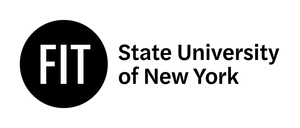NEW YORK, March 27, 2023 /PRNewswire/ -- The Museum at FIT's upcoming exhibition ¡Moda Hoy! Latin American and Latinx Fashion Design Today examines the work of 21st-century Latin American and Latinx fashion designers.
The exhibition features over 60 objects from the museum's permanent collection, including many new acquisitions, bilingual texts presented in English and Spanish, and supplementary fashion media. It spotlights designers from Latin American countries, as well as designers of Latin American heritage living and working in the United States who are often referred to as Hispanic, Latino/Latina, or the gender-neutral term Latinx.
For decades, fashion designers of Latin American descent, such as Carolina Herrera, Oscar de la Renta, Alexandre Herchcovitch, Edmundo Castillo, Victor Alfaro, and Haider Ackermann, have been central figures of the fashion industry. Their successes have paved the way for new generations of talented designers, including Gabriela Hearst, Jonathan Cohen,Romina Cardillo of Nous Etudions, Willy Chavarria, Raul Lopez of LUAR, and Kika Vargas. These represent but a few of the emerging designers who are making their mark on the global scene by helming fashion houses, winning prestigious awards, and dressing celebrity clients.
The exhibition is thematically organized into sections that address art, craftsmanship, elegance, gender, Indigenous heritage, politics, popular culture, and sustainability. It seeks to challenge stereotypes about fashion by designers of Latin American heritage, moving away from a notion of a singular Latin American style and drawing attention to the diversity of talent.
The introductory section of the exhibition focuses on designers who gained global recognition during the 20th century. On display is an early 1970s dress by the Cuban-born designer Adolfo (Adolfo Faustino Sardiña) who began his career as a milliner in the 1950s and went on to dress celebrities and first ladies such as Jacqueline Kennedy Onassis and Nancy Reagan. Other designers featured in this section include Luis Estévez (Cuba), Carlos Falchi (Brazil), Oscar de la Renta (Dominican Republic), and Carolina Herrera (Venezuela). Looks by Isabel Toledo (Cuba) and Maria Cornejo (Chile), round out this section, showcasing how female designers came to prominence by the 1990s.
Next, the exhibition transitions to the 21st century and explores concepts favored by contemporary designers. A section on Indigenous heritage highlights the influence of native cultures on the Latin American fashion of today. Emphasizing collaborations between designers and Indigenous artisans, it features work by Guillermo Vargas of 1/8 Takamura (Mexico) and artisan Paula Pérez Vásquez (Mixe) who together created the Blusa Cuadro Tlahui. In 2015, Mexican fashion designer Ricardo Seco partnered with artisan Mauricio Carrillo (Wixárika) to co-design a pair of sneakers to which beads were applied using an ancestral technique. Also featured in this section is a design by Brazilian, Fulni-ô, and Aymara fashion designer Dayana Molina.
A section on gender explores how ideas about femininity and masculinity are expressed, challenged, and celebrated through fashion design. With her pink embossed-leather "Mamado" pantsuit, Mexican artist and fashion designer Bárbara Sánchez-Kane satirizes the physique of the male bodybuilder. A dress by Narciso Rodriguez (Cuba) alludes to a woman's sexual power and reflects the designer's appreciation for both the strengths and vulnerabilities of femininity. Other designers featured in this section are Victor Barragán (Mexico) and Suki Cohen (Colombia).
Women's rights, immigration, and geo-political relations are topics central to the section on politics. Carla Fernández's Adelita pantsuit pays homage to the female soldiers of the Mexican Revolution who were subjected to sexual violence and discrimination yet were instrumental to the armies engaged in this civil conflict. A fashion film by designers Juan Carlos Pereira and Andrés Jordan of the Bolivian fashion label Juan de La Paz, comments on the rumored "Black Legend," which brought Queen Victoria and England into conflict with Bolivia, leading to her infamously cross out that country on her world map. This legend underscores the asymmetry of global North-South relations. Designs by Brazilian fashion labels Alexandre Herchcovitch and Apartamento 03, along with a flag bag by Venezuelan designer Yliana Yepez, are also included.
A section on sustainability examines the ways in which Latin American and Latinx designers are integrating cultural knowledge, traditional craft, natural resources, and novel materials to create ethically responsible designs. Dresses by Gabriela Hearst (Uruguay) and Escvdo (Peru) highlight how partnerships with women's cooperatives in Latin America are shaping a holistic view of sustainable production with social, cultural, economic, and environmental implications. Sneakers by Brazil's most prominent sustainable fashion label, Osklen, demonstrate the use of responsibly sourced material from the Amazon, such as pirarucu leather. Looks from Maria Cornejo's special capsule collection, a collaboration with the Korean motor company Hyundai, incorporate repurposed car seat leather to promote sustainability across industries.
Artisanal techniques are explored in a section devoted to craftsmanship. Numerous designers incorporate handmade processes into their work, thereby preserving local artisanal techniques. Designs by Johanna Ortiz (Colombia), PatBO (Brazil), Carlos Miele (Brazil), and Julia y Renata (Mexico) are featured.
Another section focuses on elegance as a social construct that varies depending on mores, geography, and cultures. Designs by PTRA (Mexico) and Proenza Schouler (Lazaro Hernandez, Cuba) are included.
A section on art presents the fluid boundaries that exist between artistic practice and fashion. A look by Rick Owens celebrating his Mexican heritage was inspired by pre-Hispanic architecture and modern art. A design by Isabel Toledo is paired with the work of artist Ruben Toledo as one example of the fruitful creative partnership that existed between the late fashion designer and her husband. Other designers in this section are Kate and Laura Mulleavy of Rodarte (Mexico), Jorge Duque (Colombia), and Francisco Costa (Brazil).
The exhibition culminates with an investigation into the ways in which Latin American and Latinx designers have incorporated popular culture into their work. A look from the Spring 2022 collection of Mexican American designer Willy Chavarria references cholos and pachucos. Colombian designer Esteban Cortázar's fall 2019 flamenco dress pays homage to dance and bullfighting—two of the most popular forms of entertainment in Latin America. Additional designs in this section contend with music, sports, and even cultural icons. Designers featured include Raul Lopez of Luar (Dominican Republic), Rio Uribe of Gypsy Sport (Mexico), and Humberto Leon of Opening Ceremony (Peru).
The development of this exhibition incorporated the thoughts, perspectives, and opinions of members of the Latin American fashion community, the FIT community, and the Latinx diaspora, with the objective of decentering the study of fashion. This was realized through the development of an advisory committee, campus focus groups, and a pre-exhibition symposium, which enriched the exhibition narrative on Latin American and Latinx fashion and fashion design.
The Museum at FIT will host several programming events related to the exhibition as part of its Fall 2023 Fashion Culture series.
The exhibition is accompanied by a companion book published by Bloomsbury titled Latin American and Latinx Fashion Design Today ¡Moda Hoy! It will be released in early 2024.
¡Moda Hoy! Latin American and Latinx Fashion Design Today is organized by The Museum at FIT's Tanya Melendez-Escalante, senior curator of education and public programs, and Melissa Marra-Alvarez, curator of education and research.
About The Museum at FIT (MFIT)
The Museum at FIT, which is accredited by the American Alliance of Museums, is the only museum in New York City dedicated solely to the art of fashion. Best known for its innovative and award-winning exhibitions, the museum has a collection of more than 50,000 garments and accessories dating from the 18th century to the present. Like other fashion museums, such as the Musée de la Mode, the Mode Museum, and the Museo de la Moda, The Museum at FIT collects, conserves, documents, exhibits, and interprets fashion. The museum's mission is to advance knowledge of fashion through exhibitions, publications, and public programs.
The museum is open Wednesdays, Thursdays, and Fridays from noon to 8 pm, and Saturdays and Sundays from 10 am to 5 pm. Admission is free. All visitors are requested to review the latest safety guidelines and protocols. For more information and the latest MFIT updates, visit fitnyc.edu/museum; register for the MFIT newsletter; and follow the museum on Instagram, Twitter, and Facebook.
About the Fashion Institute of Technology
A part of the State University of New York, FIT has been a leader in career education in art, design, business, and technology throughout its history. Providing its approximately 9,000 students with an uncommon blend of hands-on, practical experience, theory, and a firm grounding in the liberal arts, the college offers a wide range of affordable programs that foster innovation and collaboration. Its distinctive curriculum is geared to today's rapidly growing economy, including fields such as computer animation, toy design, production management, film and media, and cosmetics and fragrance marketing. Internationally renowned, FIT draws on its New York City location to provide a vibrant, community in which to learn. The college offers nearly 50 majors and grants AAS, BFA, BS, MA, MFA, and MPS degrees, preparing students for professional success and leadership in the new creative economy. Calvin Klein, Michael Kors, Reem Acra, Brian Atwood, Dennis Basso, Francisco Costa, Norma Kamali, Nanette Lepore, Bibhu Mohapatra, Ralph Rucci, John Bartlett, Peter Do, Daniel Roseberry and Michelle Smith. Other prominent graduates include Leslie Blodgett, creator of bareMinerals; international restaurant designer Tony Chi; and Nina Garcia, editor in chief, Elle.
Visit fitnyc.edu.
CONTACT:
Steven Bibb
[email protected]
SOURCE The Museum at FIT

WANT YOUR COMPANY'S NEWS FEATURED ON PRNEWSWIRE.COM?
Newsrooms &
Influencers
Digital Media
Outlets
Journalists
Opted In





Share this article